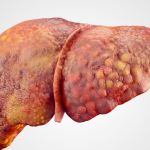Beyond Sunscreen: Skin Chemoprotection With Natural Medicine
Heather Paulson, ND; Betsy Rice, ND
The skin is the largest organ of our body and is an important interface between our other organs and the outside environment. Observing the skin can be a window into the internal function of a patient’s body. Most skin disorders are linked to solar UV radiation. The incidence of UV-induced nonmelanoma skin cancer has increased worldwide, accounting for more then 40% of all human cancers in the United States.1 A possible cause of this increase is the depletion of ozone.2 It is important that we educate our patients about effective avoidance of skin cancer and prevention techniques against subsequent skin cancer diagnosis once a cancerous lesion has been identified.
One of the best remedies for the treatment of skin cancer is prevention. Although the sun gives us life-sustaining energy and is the catalyst for the production of vitamin D in the body, too much of a good thing can be damaging. According to the Skin Cancer Foundation (www.skincancer.org), a single blistering sunburn in childhood or adolescence more than doubles a person’s chance of developing melanoma later in life. A person’s risk for melanoma also doubles if he or she has had 5 or more sunburns at any age.
Prevention of sunburn can be as simple as avoiding direct sunlight between the hours of 10 am and 4 pm or covering sun-exposed areas of skin with a wide-brimmed hat and clothing. A diet rich in flavonoids or phenolic substances (powerful antioxidants found in richly colored berries, vegetables, green and black tea, red wines, etc) may favorably supplement the protection of sunscreens and may provide additional antiphotocarcinogenic protection.3
The 2 types of solar irradiation that can cause skin disease are UV-B and (to a lesser extent) UV-A waves. Photocarcinogenesis, the pathway by which UV radiation causes cancer, is a complex multistep process that includes reduced antioxidant status, a cyclooxygenase 2–triggered inflammatory response, DNA mutation, matrix metalloproteinase breakdown, irradiation-induced immunosuppression, and collagen type I damage.
Photochemoprotection With Natural Topical Applications
Topical plant polyphenols are being closely examined as an adjunct to sunblock agents. When used in combination, a greater level of photoprotection is conferred to the skin. Natural products being examined in human trials include green tea, grape seed extract, vitamin C, and nicotinamide.
Individuals who applied green or white tea topically (at a dose of 2.5 mg/cm2) 15 minutes before UV exposure demonstrated reduced oxidative DNA damage and prevention of Langerhans cell depletion and immunosupression.4 In another study,5 epigallocatechin-3-gallate was applied (at a dose of 3 mg/2.5 cm2) and showed reductions in reactive oxygen species formation, inflammatory metabolites, leukocyte infiltration, and erythema, as well as fewer dead cells in the epidermis.
Topical application of nicotinamide has been shown to reduce UV-induced immunosupression.6 It is available as an additive to sunscreens.
In several animal models, grape seed proanthocyanidins have been shown not only to prevent skin changes induced by sun irradiation but also to possibly treat tumor cells. A small human trial looked at the topical application of grape seed proanthocyanidin extract 30 minutes before UV exposure. Skin treated with the extract had significantly fewer sunburned cells and mutant p-53–positive epidermal cells.
Another nutrient with human clinical trial support is vitamin C. When applied topically, vitamin C can reduce p53 protein expression, sunburned cells, immunosuppression, and thymine dimer mutations, which are associated with skin cancer formation.7,8 When used in combination with vitamin E, vitamin C offers good protection from UV-B skin insult, with vitamin C being more protective then vitamin E. However, the most protection against UV-B skin damage was seen when combining vitamin C and vitamin E with other known sunscreens.9
Systemic Photochemoprotection
Skin can also be protected from UV radiation damage through systemic ingestion of natural products. A small study10 looked at the ingestion of green tea for its photoprotective capabilities. Study participants drank 18 oz of green tea and were exposed to UV radiation for 60 minutes after ingestion. Blood samples revealed decreased reactive oxygen species formation and reduced DNA damage. A 12-week trial in which women consumed 1402 mg of catechins via a green tea beverage showed significant reduction in UV-induced erythema and general improvement in skin structure compared with a placebo control group.11
Green tea is not alone in its photoprotective abilities. Another study12 looked at black tea ingestion and compared it with black tea plus citrus peel, examining the effect on squamous cell carcinoma (SCC) incidence. The study revealed that iced black tea provided no protective effects against SCC; however, hot black tea reduced the risk of SCC by 40%. Citrus peel consumption alone reduced the risk of SCC by 70%, and when added to black tea, participants had a significant reduction in the incidence of SCC.
In another small study,13 healthy adults received approximately 500 mg of Polypodium leucotomos and showed a significant reduction in erythema and an improvement in immune cell function. Oral P leucotomos inhibits reactive oxygen species formation, DNA damage, UV-mediated apoptosis and necrosis, and degradative matrix remodeling.14
Nicotinamide is being investigated for reducing sun damage when taken orally. In a human study,15 participants took 2 different dosages of nicotinamide, and both the 1500-mg and 500-mg daily doses significantly reduced UV immunosuppression in irradiated skin, with no immune effects in nonirradiated skin.
A diet rich in leafy greens and lycopene also provides systemic photoprotection. When eating a dietary equivalent of 8 to 16 mg of lycopene daily, participants showed significant improvement in protection against UV-induced erythema.16
Homeopathic Photochemoprotection
Once the damage of a sunburn occurs, what can you do? When applying the most similar remedy, homeopathy can provide almost immediate relief from the pain of sunburns.
Cantharis
Cantharis is the most commonly used remedy for sunburns and other burns with blistering. It can be effective in calming restlessness in patients having a burn with rawness or smarting that is sensitive to touch and relieved by cold applications. Cantharis is also indicated in more severe second-degree and third-degree burns.
Urtica urens
Urtica urens is indicated when a burn is mild and the symptoms are redness with stinging or prickling pains. It is also effective in burns accompanied by itching and is recommended for first-degree or second-degree burns.
Causticum
Causticum is indicated for a burn that is intensely painful and sore. It can often help to heal older burns and is recommended for third-degree burns.
Belladonna
Belladonna is indicated for a hot throbbing sunburn, sometimes accompanied by a throbbing headache. Pain associated with a burn may come and go suddenly. Belladonna is recommended for patients with more extreme sunburn, throbbing headache, and photosensitivity and is useful in cases of sunstroke.
Hypericum
Hypericum is often helpful when the pain of a burn is intense and the nerves are extremely sensitive. It is recommended when stabbing or shooting pains are felt in the injured area in addition to the usual discomfort of a burn.
Up-and-coming Natural Photoprotection
Because the incidence of skin cancer is rapidly increasing, more natural products are being investigated for their photoprotection capabilities. Natural ingredients that have been successful in animal models include pomegranate, milk thistle, resveratrol, leafy greens, curcumin, genestein, honokiol, and sulforophane.
As physicians, it is important to continue to educate our patients about skin cancer prevention. From dietary changes to homeopathy, we have many tools for our patients to use. You might want to start by encouraging your patients to increase their dietary polyphenols, carotenoids, and proanthocyanidin intake. You might also want to recommend topical applications of green tea, nicotinamide, vitamin C, and grape seed extract. I often encourage my patients to take a bath with 2 to 3 green tea bags steeped for 3 to 5 minutes after sun exposure. If your patient gets a sunburn, the negative effects can be reduced by the application of a carefully selected homeopathic remedy. Whichever route you choose, your patients can reap the benefits of photoprotection with natural medicine.
 Heather Paulson, ND is a fellow of the American Board of Naturopathic Oncology, which represents the highest expertise in the area of naturopathic oncology. Dr Paulson is in private practice at Arizona Natural Health Center (Tempe). She enjoys working in a team with Dr Elizabeth Rice to provide their patients with the most comprehensive natural treatment of cancer. They pair the best of dietary, botanical, and intravenous therapies with classic homeopathy for cancer inhibition.
Heather Paulson, ND is a fellow of the American Board of Naturopathic Oncology, which represents the highest expertise in the area of naturopathic oncology. Dr Paulson is in private practice at Arizona Natural Health Center (Tempe). She enjoys working in a team with Dr Elizabeth Rice to provide their patients with the most comprehensive natural treatment of cancer. They pair the best of dietary, botanical, and intravenous therapies with classic homeopathy for cancer inhibition.
 Elizabeth Rice, ND is one of only a few physicians in the country to have completed a second-year residency specializing in classic homeopathy at the Southwest College of Naturopathic Medicine (Tempe, Arizona). Dr Rice is in private practice at the Arizona Natural Health Center, where she has teamed up with Dr Heather Paulson to treat patients with cancer. Dr Rice’s homeopathic approach to cancer addresses the underlying imbalances that contribute to cancer growth and function.
Elizabeth Rice, ND is one of only a few physicians in the country to have completed a second-year residency specializing in classic homeopathy at the Southwest College of Naturopathic Medicine (Tempe, Arizona). Dr Rice is in private practice at the Arizona Natural Health Center, where she has teamed up with Dr Heather Paulson to treat patients with cancer. Dr Rice’s homeopathic approach to cancer addresses the underlying imbalances that contribute to cancer growth and function.
References
- Jermal A, Siegel R, Xu J, Ward E. Cancer statistics, 2010. CA Cancer J Clin. 2010;60:277-300.
- Norval M, Lucas RM, Cullen AP, et al. The human health effects of ozone depletion and interactions with climate change. Photochem Photobiol Sci. 2011;10(2):199-225.
- Baliga MS, Katiyar SK. Chemoprevention of photocarcinogenesis by selected dietary botanicals. Photochem Photobiol Sci. 2006;5(2):243-253.
- Camouse MM, Santo Domingo D, Swain FR, et al. Topical application of green and white tea extracts provides protection from solar-simulated ultraviolet light in human skin. Exp Dermatol. 2009;18(6):522-526.
- Katiyar SK, Matsui MS, Elmets CA, Mukhtar H. Polyphenolic antioxidant epigallocatechin-3-gallate from green tea reduces UVB-induced inflammatory responses and infiltration of leukocytes in human skin. Photochem Photobiol. 1999;69(2):148-153.
- Damien DL, Patterson CR, Stapelberg M, Park J, Barnetson RS, Halliday GM. UV radiation–induced immunosuppression is greater in men and prevented by topical nicotinamide. J Invest Dermatol. 2008;128(2):447-454.
- Oresajo C, Yatskayer M, Galdi A, Foltis P, Pillai S. Complementary effects of antioxidants and sunscreens in reducing UV-induced skin damage as demonstrated by skin biomarker expression. J Cosmet Laser Ther. 2010;12(3):157-162.
- Murray JC, Burch JA, Streielein RD, Iannacchione MA, Hall RP, Pinnell SR. Topical antioxidant solution containing vitamins C and E stabilized by ferulic acid provides protection for human skin against damage caused by ultraviolet irradiation. J Am Acad Dermatol. 2008;59(3):418-425.
- Darr D, Dunston S, Faust H, Pinnell S. Effectiveness of antioxidants (vitamin C and vitamin E) with and without sunscreens as topical photoprotectants. Acta Derm Venereol. 1996;76(4):264-268.
- Malhomme de la Roche H, Seagrove S, Mehta A, Divekar P, Campbell S, Curnow A. Using natural dietary sources of antioxidants to protect against ultraviolet and visible radiation-induced DNA damage: an investigation of human green tea ingestion. J Photochem Photobiol B. 2010;101(2):169-173.
- Heinrich U, Moore CE, De Spirit S, Tronnier H, Stahl W. Green tea polyphenols provide photoprotection, increase microcirculation, and modulate skin properties of women. J Nutr. 2011;14(6):1202-1208.
- Hakim IA, Harris RB. Joint effects of citrus peel use and black tea intake on the risk of squamous cell carcinoma of the skin. BMC Dermatol. 2001;1:3. http://www.ncbi.nlm.nih.gov/pmc/articles/PMC45584/?tool=pubmed. Accessed March 14, 2012.
- Middelkamp-Hup MA, Pathak MA, Parrado C, et al. Oral Polypodium leucotomos extract decreases ultraviolet-induced damage of human skin. J Am Acad Dermatol. 2004;51(6):910-918.
- Gonzalez S, Gilaberte Y, Philips N. Mechanistic insights in the use of Polypodium leucotomos extract as an oral and topical photoprotective agent. Photochem Photobiol Sci. 2010;9(4):559-563.
- Yiasemides E, Sivapirabu G, Halliday GM, Park J, Damian DL. Oral nicotinamide protects against ultraviolet radiation induced immunosuppression in humans. Carcinogenesis. 2009;30(1):101-105.
- Stahl W, Heinrich U, Aust O, Tronnier H, Sies H. Lycopene-rich products and dietary photoprotection. Photochem Photobiol Sci. 2006;5:238-242.









